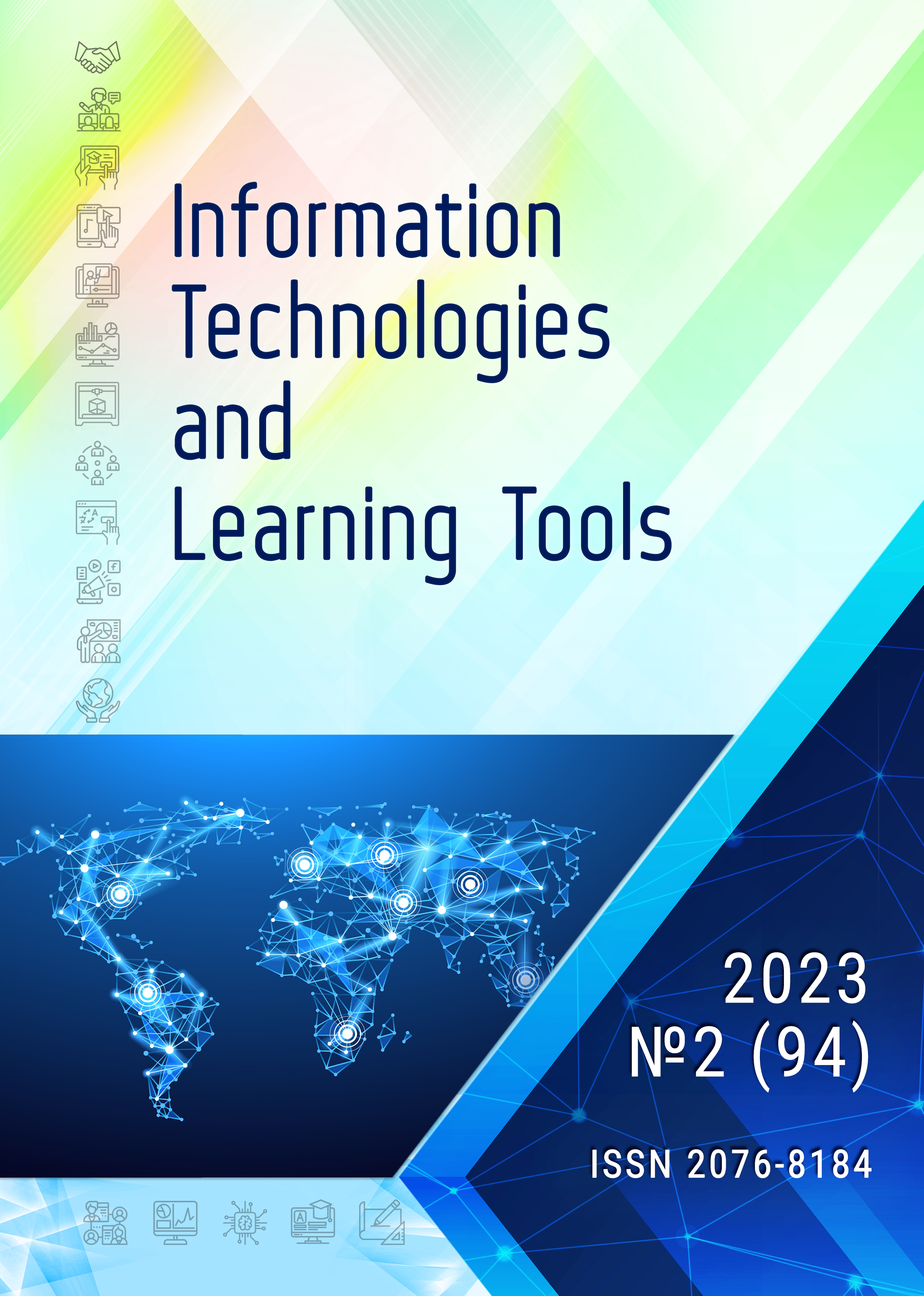Abstract
The article substantiates the use of digital business simulators as the type of digital educational resources for decision-making knowledge, skills, and attitudinal and behavioral readiness development in economic and managerial training for a Master’s in Information Technologies. The use of digital business simulations as the tool for immersive practices implementation in the educational process provides the possibility to conduct imitated experiences to serve an educational and research-related purpose. Contract Design and Principal-Agent dilemma simulation usage allows the modeling of situations realistically imitating reality and helps to form a basic attitude and understanding of contractual design and information asymmetry concepts in the economy and managerial science. The concepts are crucial for future professionals working in IT, interacting in teams, and developing in people- and task-management areas. The use of multi-user simulated environments for educational interaction of the groups of students provides a close to a realistic experience of acting in life- and work-specific situations. These experiences serve to ignite interest, improve motivation to learn, and establish the ground for a further deeper discussion on the topics and formation of the attitudinal and behavioral components of the economic and managerial competence as part of the soft skills of the Master’s in IT students. The educational activity described and analyzed in the article proved to be useful for both educational and research-related purposes. The mistake, made by the organizer of the activity provided additional learning possibilities for the group and valuable input for the research. The students showed involvement, dedication, and active participation in the active learning imitated experience. The group showed learning progress toward conventional optimality in the simulated concepts. Used digital education resources provided acceptable ease of use and satisfying functionality of the analysis tools. The behavioral specifics, based on the gender differences were unpredicted, but valuable results of the educational experience. Further efforts will be put to the improvement of the technical integration of such simulators into the digital educational environment of higher education institutions and the development of methodological support for the use of such simulators in the educational process.
References
T. C. Lin, “Using classroom gameplay in introductory microeconomics to enhance business student learning and lecture attendance”, Journal of Education for Business, vol. 93, no. 7, pp. 294–302, 2018, doi: 10.1080/08832323.2018.1493423. (in English)
A. R. Bennato, A. Gourlay, C. M. Wilson, “A classroom experiment on the causes and forms of bounded rationality in individual choice”, The Journal of Economic Education, vol. 51, no. 1, pp. 31–41, 2020, doi: 10.1080/00220485.2019.1687374. (in English)
B. Hong, “A demand and supply game exploring global supply chains”, The Journal of Economic Education, vol. 51, no. 1, pp. 42–51, 2019, doi: 10.1080/00220485.2019.1687373. (in English)
N. P. S. Cook, A. Pantuosco, “International trade with heterogeneous firms: An interactive classroom simulation”, The Journal of Economic Education, vol. 53, no. 1, pp. 31–42, 2021, doi: 10.1080/00220485.2021.2004275. (in English)
O. Ignatenko, “Guessing games experiments in school education and their analysis”, in Proceedings of the 16th International Conference on ICT in Education, Research and Industrial Applications. Integration, Harmonization and Knowledge Transfer. Volume II: Workshops, Kharkiv, Ukraine, October 06-10, 2020, CEUR Workshop Proceedings, vol. 2732, pp. 881-892. [Online]. Available: https://ceur-ws.org/Vol-2732/20200881.pdf (in English)
O. Ignatenko, “Guessing Games Experiments in Ukraine. Learning towards Equilibrium”, in Proceedings of the 1st Symposium on Advances in Educational Technology - Volume 2: AET, 2022, pp. 156-168, doi: 10.5220/0010929600003364. (in English)
J. R. Bruehler, A. P. Grant, L. S. Ghent, “Teaching Collective Action Problems without Contextual Bias: The Red/Green Simulation”, Journal of Economics and Finance Education, vol. 16, no. 1, pp. 19-27, Feb. 2017. Accessed: Apr. 10, 2023. [Online]. Available: https://www.economics-finance.org/jefe/issues/JEFE-Vol-16-Num-1-Winter-2017.pdf (in English)
Classroom Games for Teaching Economics. https://economics-games.com/ (accessed Apr. 10, 2023) (in English)
SimulationLab - Choose a game. https://simulationlab.azurewebsites.net/games (accessed Apr. 10, 2023) (in English)
D. S. Antoniuk, T. A. Vakaliuk, V. V. Ievdokymov, A. V., Morozov, V. V. Kontsedailo, “Integrating business simulations software into learning environment of technical university”, Journal of Physics: Conference Series, vol. 1946, no. 1.012018, 2021, doi: 10.1088/1742-6596/1946/1/012018. (in English)
Robert W. Rauchhaus, “Principal-Agent Problems in Humanitarian Intervention: Moral Hazards, Adverse Selection, and the Commitment Dilemma”, International Studies Quarterly, vol. 53, iss. 4, pp. 871–884, 2009, doi: 10.1111/j.1468-2478.2009.00560.x. (in English)
K. M. Eisenhardt, “Agency theory: An assessment and review”, Academy of Management Review, vol. 14, no. 1, pp. 57–74, 1989, doi: 10.2307/258191. (in English)
S. Gächter, M. Königstein, “Design a Contract: A Simple Principal-Agent Problem as a Classroom Experiment”, CeDEx Discussion Paper Series, vol. 40, no. 2, pp. 173–187, 2010, doi: 10.3200/JECE.40.2.173-187. (in English)
The portrait of an IT specialist — 2022. Analytics | DOU.. https://dou.ua/lenta/articles/portrait-2022/DOU.UA. (accessed Apr. 10, 2023) (in Ukrainian)
N. Campos, M. Nogal, C. Caliz, et al. “Simulation-based education involving online and on-campus models in different European universities”, International Journal of Educational Technology in Higher Education, vol. 17, no. 8, 2020, doi: 10.1186/s41239-020-0181-y. (in English)
G. Falloon, “From simulations to real: Investigating young students’ learning and transfer from simulations to real tasks”, British Journal of Educational Technology, vol. 51, no. 3, pp. 778-797, 2020, doi: 10.1111/bjet.12885. (in English)

This work is licensed under a Creative Commons Attribution-NonCommercial-ShareAlike 4.0 International License.
Copyright (c) 2023 Дмитро Сергійович Антонюк, Олег Михайлович Спірін, Тетяна Анатоліївна Вакалюк


